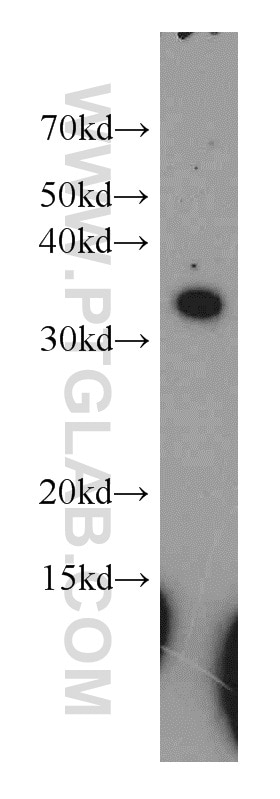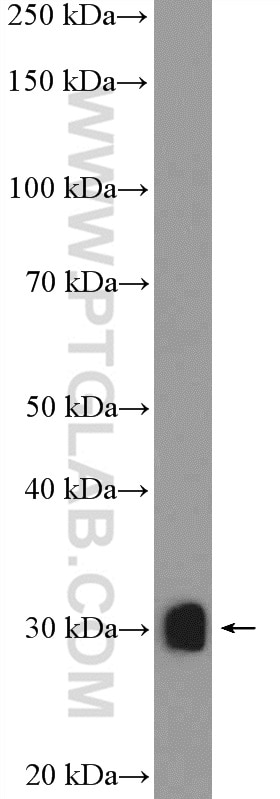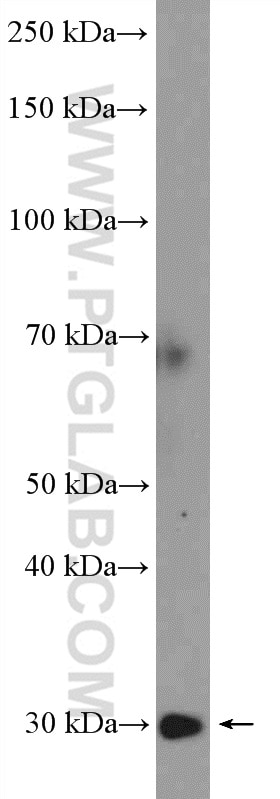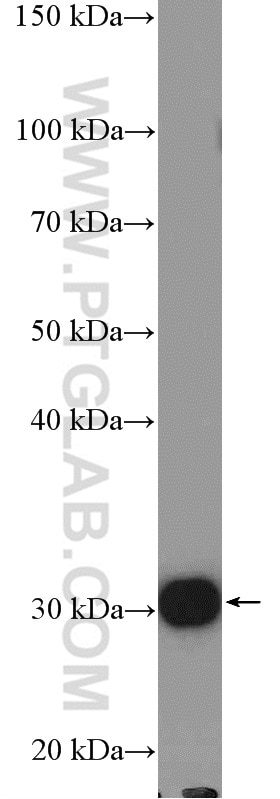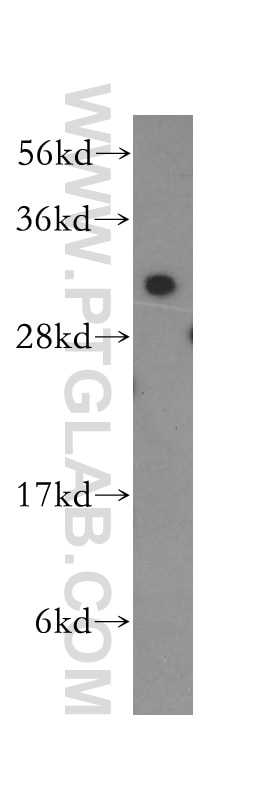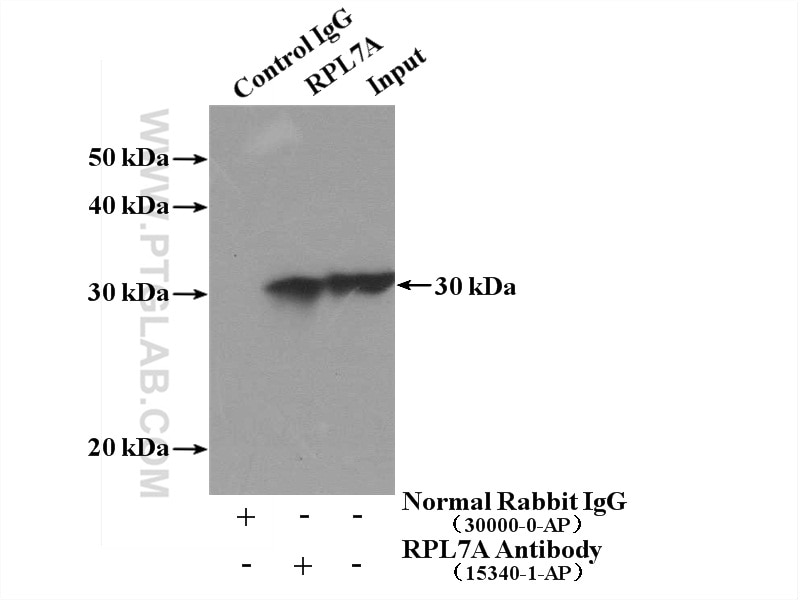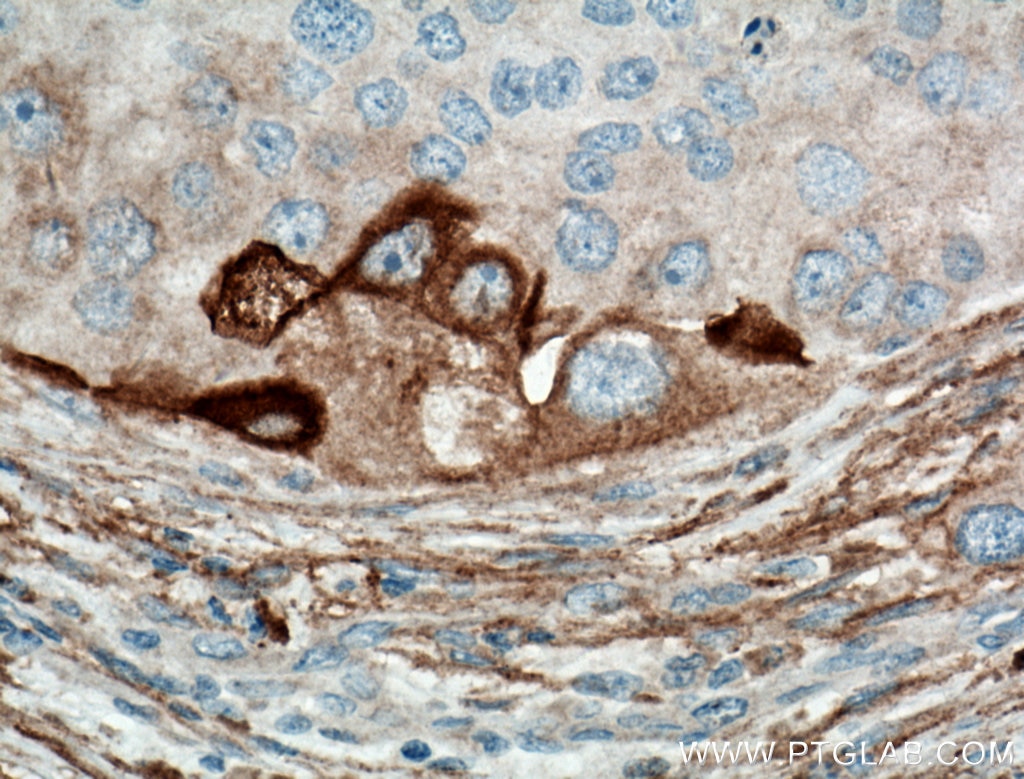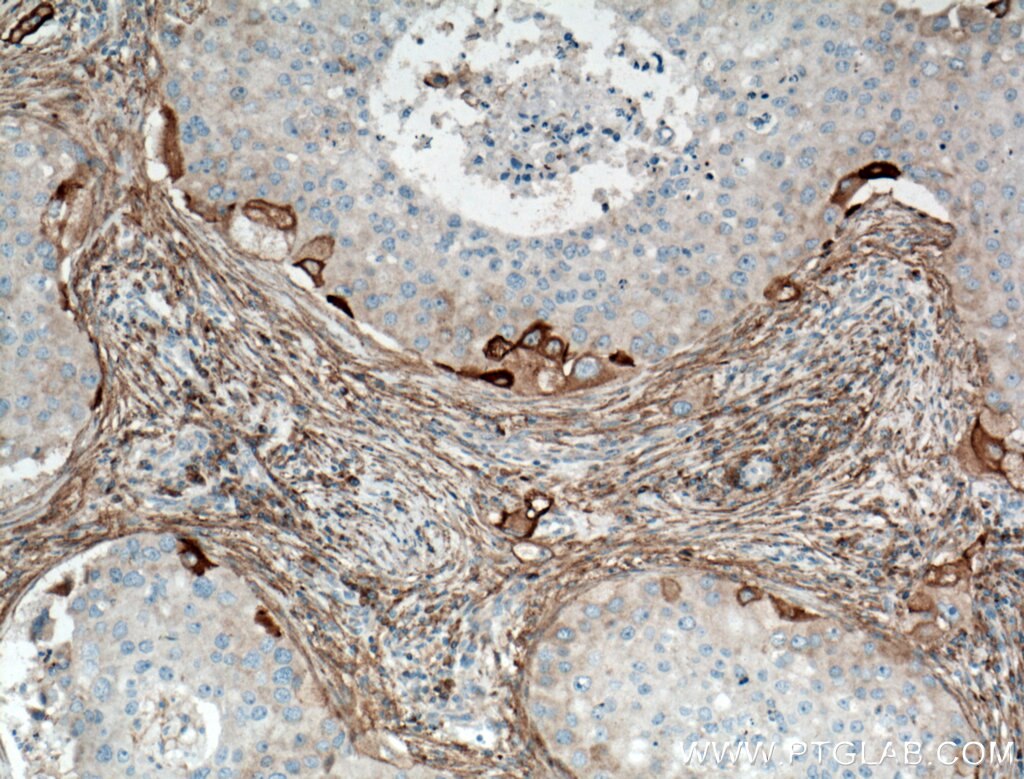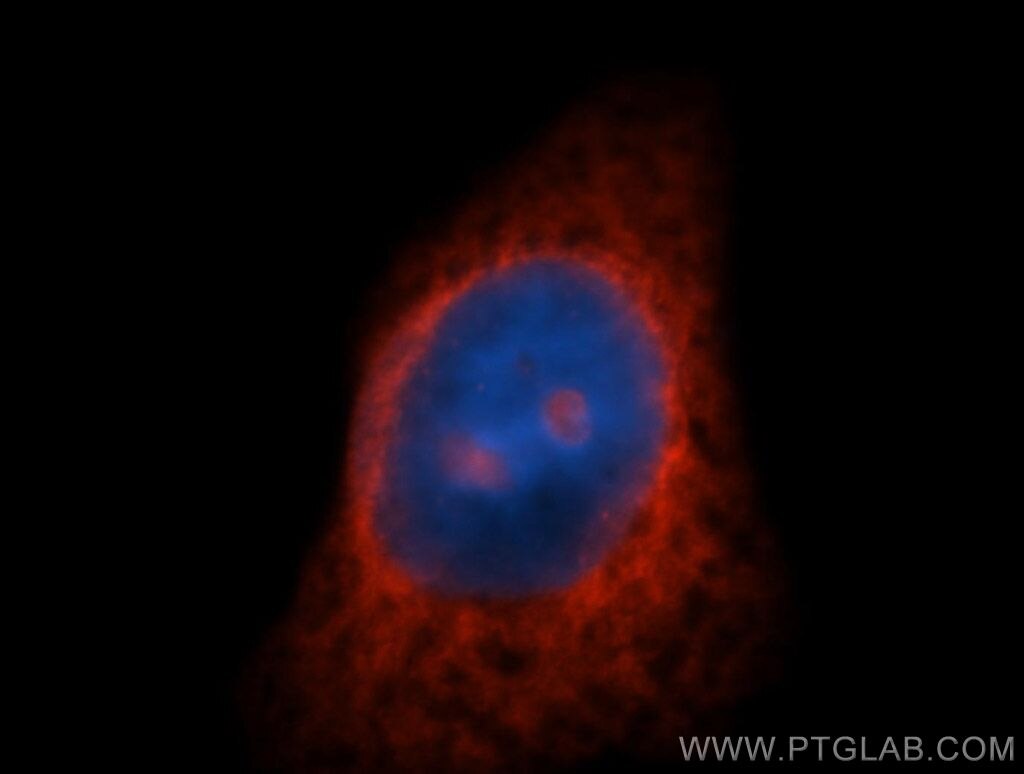RPL7A Polyklonaler Antikörper
RPL7A Polyklonal Antikörper für WB, IHC, IF/ICC, IP, ELISA
Wirt / Isotyp
Kaninchen / IgG
Getestete Reaktivität
human, Maus, Ratte und mehr (1)
Anwendung
WB, IHC, IF/ICC, IP, ELISA
Konjugation
Unkonjugiert
Kat-Nr. : 15340-1-AP
Synonyme
Geprüfte Anwendungen
| Erfolgreiche Detektion in WB | MCF7 cells, MCF-7-Zellen, Mausnierengewebe, Mauslebergewebe, Rattennierengewebe |
| Erfolgreiche IP | Mausnierengewebe |
| Erfolgreiche Detektion in IHC | humanes Mammakarzinomgewebe Hinweis: Antigendemaskierung mit TE-Puffer pH 9,0 empfohlen. (*) Wahlweise kann die Antigendemaskierung auch mit Citratpuffer pH 6,0 erfolgen. |
| Erfolgreiche Detektion in IF/ICC | HepG2-Zellen |
Empfohlene Verdünnung
| Anwendung | Verdünnung |
|---|---|
| Western Blot (WB) | WB : 1:500-1:2000 |
| Immunpräzipitation (IP) | IP : 0.5-4.0 ug for 1.0-3.0 mg of total protein lysate |
| Immunhistochemie (IHC) | IHC : 1:50-1:500 |
| Immunfluoreszenz (IF)/ICC | IF/ICC : 1:20-1:200 |
| It is recommended that this reagent should be titrated in each testing system to obtain optimal results. | |
| Sample-dependent, check data in validation data gallery | |
Veröffentlichte Anwendungen
| WB | See 7 publications below |
| IF | See 5 publications below |
| IP | See 1 publications below |
Produktinformation
15340-1-AP bindet in WB, IHC, IF/ICC, IP, ELISA RPL7A und zeigt Reaktivität mit human, Maus, Ratten
| Getestete Reaktivität | human, Maus, Ratte |
| In Publikationen genannte Reaktivität | human, Maus, Ziege |
| Wirt / Isotyp | Kaninchen / IgG |
| Klonalität | Polyklonal |
| Typ | Antikörper |
| Immunogen | RPL7A fusion protein Ag7543 |
| Vollständiger Name | ribosomal protein L7a |
| Berechnetes Molekulargewicht | 266 aa, 30 kDa |
| Beobachtetes Molekulargewicht | 30-32 kDa |
| GenBank-Zugangsnummer | BC005128 |
| Gene symbol | RPL7A |
| Gene ID (NCBI) | 6130 |
| Konjugation | Unkonjugiert |
| Form | Liquid |
| Reinigungsmethode | Antigen-Affinitätsreinigung |
| Lagerungspuffer | PBS with 0.02% sodium azide and 50% glycerol |
| Lagerungsbedingungen | Bei -20°C lagern. Nach dem Versand ein Jahr lang stabil Aliquotieren ist bei -20oC Lagerung nicht notwendig. 20ul Größen enthalten 0,1% BSA. |
Hintergrundinformationen
Ribosomal proteins are a major component of ribosomes, which catalyze protein synthesis. RPL7a, which is a component of the 60S large ribosomal subunit, has additional functions involved in cell growth and differentiation that occur via interaction with human thyroid hormone receptor (THR) and retinoic acid receptor (RAR) and in turn inhibit the activities of the two nuclear hormone receptors [PMID:21505254].
Protokolle
| PRODUKTSPEZIFISCHE PROTOKOLLE | |
|---|---|
| WB protocol for RPL7A antibody 15340-1-AP | Protokoll herunterladen |
| IHC protocol for RPL7A antibody 15340-1-AP | Protokoll herunterladenl |
| IF protocol for RPL7A antibody 15340-1-AP | Protokoll herunterladen |
| IP protocol for RPL7A antibody 15340-1-AP | Protokoll herunterladen |
| STANDARD-PROTOKOLLE | |
|---|---|
| Klicken Sie hier, um unsere Standardprotokolle anzuzeigen |
Publikationen
| Species | Application | Title |
|---|---|---|
Cell Regnase-1 and Roquin Regulate a Common Element in Inflammatory mRNAs by Spatiotemporally Distinct Mechanisms. | ||
Mol Cell Estrogen-Related Hormones Induce Apoptosis by Stabilizing Schlafen-12 Protein Turnover. | ||
Acta Neuropathol Commun Inefficient quality control of ribosome stalling during APP synthesis generates CAT-tailed species that precipitate hallmarks of Alzheimer's disease | ||
Nucleic Acids Res The induction of p53 correlates with defects in the production, but not the levels, of the small ribosomal subunit and stalled large ribosomal subunit biogenesis | ||
Am J Cancer Res UBE2S targets RPL26 for ubiquitination and degradation to promote non-small cell lung cancer progression via regulating c-Myc | ||
Nat Commun Nuclear and cytoplasmic specific RNA binding proteome enrichment and its changes upon ferroptosis induction |
